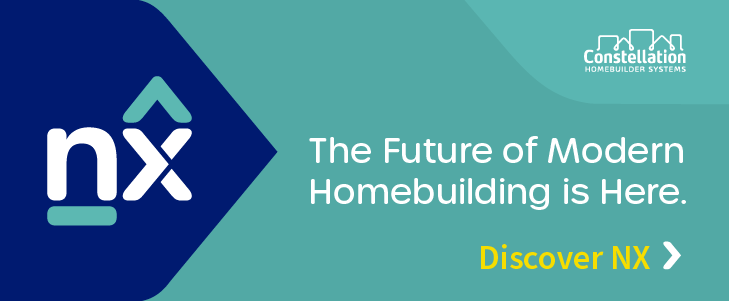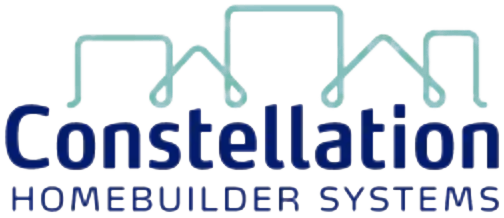Technology
Margin Mission: Homebuilders Race To Crack Inefficiency Code
Spring 2025 has fallen short of expectations. Builders are turning to integrated data systems to protect margins and prep for the next wave.

Margins Under Pressure: Builders Face a Reckoning
Spring is supposed to be homebuilding’s moment. But 2025’s selling season has been jammed in neutral. Consumer sticker shock, stubborn mortgage rates, and insurance and property tax drag have forced builders into a full-blown incentive war. Everything's on the table for mortgage buydowns, free upgrades, design credits, and rate locks.
The result? Sales that trickle instead of surge. And margins that shrink by the day.
"Strike price" has become the new holy grail — the price at which consumers say yes. But finding that number is only half the equation. The other half? Making the math work inside the operation's walls. That's where integrated systems, data clarity, and cycle-time efficiency have moved from nice-to-have to survival mode.
Chris Graham, President of Constellation HomeBuilder Systems, hears it daily.
Builders are facing significant margin pressures due to rising material costs, labor shortages, and increased regulatory requirements," he says. "To offset these pressures, many are turning to technology solutions like Constellation's systems to streamline operations, improve efficiency, and reduce costs."
At the heart of the response is a rethinking of how homebuilders use data to look backward and manage forward. Constellation’s NX and BuilderMetrix platforms, built for production builders, are designed to give operators what they need most right now: clarity, accountability, and speed.

Operational Blind Spots Get Costly
The challenge for many builders isn’t a lack of effort. It’s a lack of visibility. Fragmented systems, Excel-based workflows, and outdated processes can hide cost creep and slow response times. Graham says this is why proactive operators have been gaining separation, outperforming reactive ones.
Homebuilding operators who use these tools proactively can anticipate and address issues before they become major problems," Graham notes. "They leverage data and insights to make informed decisions and optimize operations. Reactive operators, on the other hand, tend to respond to issues as they arise, which can lead to higher costs and inefficiencies."
One clear pressure point: construction cost control. Builders are using NX and BuilderMetrix to lock in line-item discipline.
NX and BuilderMetrix provide detailed insights into construction costs, allowing builders to identify areas where they can cut expenses and improve efficiency," Graham says. "These systems also help builders manage their budgets more effectively and ensure that they are not overspending."
Renegotiate From a Position of Knowledge
The data advantage goes beyond budgets. In today’s high-stakes environment, sourcing and supplier relations matter more than ever. Knowledge asynchrony can disadvantage a homebuilder, especially when markets encounter volatility and flux. Builders using integrated ERP are finding leverage. That's the power of knowledge in real-time decision-making.
Constellation clients are using ERP visibility to gain a comprehensive view of their supplier contracts and purchasing commitments," Graham explains. "This allows them to identify opportunities for discussion and margin improvement. By having access to detailed data on their purchasing activities, builders can make more informed decisions and negotiate better deals with suppliers."
Instead of relying on vendor reports or anecdotal jobsite intel, operators armed with BuilderMetrix dashboards can track trends like PO variance, labor productivity, and material volatility.
Dashboards that track KPIs such as cost per square foot, labor costs, and material costs are proving invaluable," says Graham. "Most notably, we have documented success with helping one builder significantly reduce their warranty costs."
Cutting Cycle-Time Bloat
Incentives can spark demand, but operational drag can kill profits. Graham suggests that builders use PO variance analysis to target choke points.
Production builders are using real-time supply chain and PO variance data to identify delays and inefficiencies," he says. "Measurable results include faster project completion times, reduced costs, and improved customer satisfaction. The best builders analyze their variances regularly and look for ways to update their budgets or eliminate them forever."
The goal isn’t just faster closings. It’s repeatability, first-time-right quality, and consistency. And that’s where systemwide integration becomes critical.
Homebuilding operators connecting ERP, construction operations, and supply chain data on a single platform make smarter tradeoffs.
That's the name of the game, especially in a market characterized by flux and signs of gravity.
Preparing to Pivot
Market signals point to a likely easing of rates in late 2025 or early 2026. But for builders stuck in analog systems, that moment might arrive too late to capitalize.
Homebuilders should be preparing for the anticipated easing of interest rates by investing in data and systems that will allow them to pivot quickly," Graham advises. "This includes implementing ERP systems, supply chain intelligence, and construction operations platforms that provide real-time insights and enable agile decision-making."
Agility, in this context, isn’t about improvising. It’s about being ready with options. Which communities to restart. Which plans to accelerate. Which suppliers can flex. All of which rely on real-time visibility and reliable forecasts.
The Cost of Staying Fragmented
Finally, Graham sounds a warning for homebuilders who still treat digital transformation as a future problem.
The strategic risk of not integrating these systems into a single platform is significant," he says. "Without a unified view of their operations, builders may struggle to make informed decisions and optimize their processes. This can lead to higher costs, inefficiencies, and missed opportunities."
As Spring 2025 slips into summer, builders face a blunt reality: Sales momentum is down, and margins are under siege. Not everywhere and all at once, but in a growing number of markets and submarkets, mojo has stalled.
However, unlike in past cycles, the tech to adapt and execute exists. It’s not a matter of awareness. It’s a matter of will.
Those who act now won’t just survive the squeeze. They’ll be ready to win when the market turns.
Constellation provides fully-integrated or standalone software solutions expertly engineered to manage the complete ecosystem of a homebuilder’s business functions and growth.
MORE IN Technology
Andrin Homes Turns Customer Pain Into Business Culture Shift
Facing the toughest Toronto market in decades, Andrin operationalized a proactive homeowner experience strategy. What started as a service platform became a catalyst for team alignment, trust, and performance.
Homebuilding’s Hardest Test: Change As Core Competency
Residential development leaders are being forced to lead across timelines. Resilience means solving today’s air pockets with tomorrow’s customers in mind.
Pre-Development Is Where Velocity Happens: Here's How
In a high-cost, high-risk market, developers and builders must find every dollar and day they can save. Integrated digital pre-construction tools are quietly delivering outsized impact — if you know where to look.


